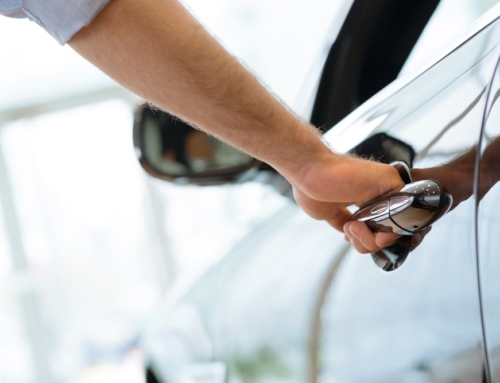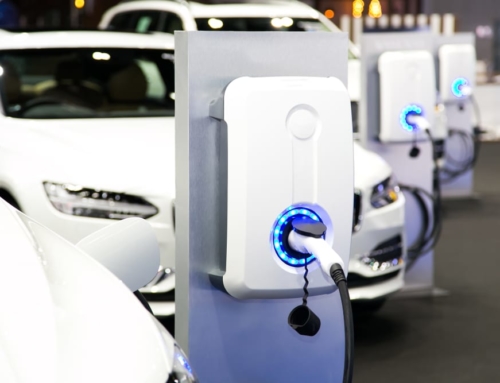When I was 18 years old, I got my first new car: a green Toyota Celica. Because I was heading off to college with a one-hour commute, my parents insisted I drive a safe, reliable car, and they gave me $1,000 toward the down payment. They balked at the thought of me driving a car like my friend’s 15-year-old stick-shift Mustang, with its rusted out floorboard and convertible top rot (which I thought was pretty cool).
If you’re in the market for a new car, you may be looking into buying a safer car than the one you have now. A safe vehicle can help protect you in the event of an accident, and it may reduce your premiums when you’re shopping for auto insurance.
These days, every new car must meet certain federal safety standards, and many automakers offer safety features beyond those required federal minimums. But that doesn’t mean that all cars are equally safe. There are still important differences, and some vehicles are safer than others.
Make sure to consider these five features when shopping for a car:
1. Crashworthiness. The Insurance Institute for Highway Safety (IIHS) measures the crashworthiness of a vehicle—how well the vehicle protects its occupants during an accident. Standard features like airbags, seatbelts, and laminated glass windshields all help protect passengers from serious injury or death in the event of a crash.
Once you’ve found a car you like, you can get a crashworthiness rating using the Insurance Information Institute’s Auto Crash Test tool.
2. Vehicle size and weight. While safety measures in small cars have improved greatly, larger, heavier cars are safer than lighter, smaller ones. According to the IIHS, small cars have twice as many occupant deaths as large cars.
When shopping for a car, consider opting for a larger vehicle that absorbs more energy in a crash. If you prefer a smaller car, review the list of vehicles awarded top safety picks by IIHS to help you choose a safe make and model.
3. Restraint and safety systems. Together, airbags and lap/shoulder belts are very effective, but it’s important that they fit you properly. In some circumstances, a shoulder belt or deploying airbag can cause serious injuries or even death.
To help avoid potential injury, choose a car that allows you to reach the gas and brake pedals comfortably without sitting too close to the steering wheel. Some cars offer telescoping steering column adjustments that may help. If you’re a petite adult, check your owner’s manual to find out if the shoulder belt has a movable anchor.
Next, research whether the vehicle you are considering has side airbags in addition to those in the front. Side airbags are designed principally to protect your chest and may keep your head from hitting the interior or structures that enter the car during a crash.
You should also look at the vehicle’s head restraints (sometimes called headrests), which are required in the front seats of all new passenger cars. These restraints keep your head from being snapped back in the event of a rear-end crash, helping prevent neck injuries.
To be effective, a head restraint has to be directly behind and close to the back of your head. If the restraints are adjustable, make sure they can be locked into place. Some don’t lock and can get pushed down in a crash.
4. Type of brakes. When you brake hard with conventional brakes, the wheels may lock, causing skidding and a lack of control. Anti-lock braking systems (ABS), on the other hand, automatically pump the brakes many times a second to prevent the wheels from locking, allowing you to keep control of the car.
It’s important to remember that while anti-lock brakes may help you keep steering control, they won’t necessarily help you stop more quickly.
5. Make and model. Other design characteristics can influence injury risk on the road. For example, some SUVs and pickups are prone to rolling over, while high-performance cars can encourage reckless driving—especially in teens and young adults.
Many of the vehicles that encourage risky behavior also come with higher insurance premiums, so be sure to take that into account when budgeting for a new sports car, for example.
Other factors that influence safety
In addition to a vehicle’s safety systems, the overall structural design of the vehicle is important. Strong cabin frames and specifically engineered crumple zones have made many of today’s cars safer, while features like daytime running lights—which make cars more visible to oncoming traffic—help prevent daytime accidents.
When shopping for a car, it’s important to find out about all of the safety features available in your desired make and model. In addition to III.org and IIHS.org, check out the National Highway Traffic Safety Administration’s (NHTSA) SaferCar app, which provides important information that will help you make informed safety decisions involving your vehicle.
Loretta L. Worters is vice president of the Insurance Information Institute, whose mission is to improve public understanding of insurance – what it does and how it works. Ms. Worters is an author and woman’s advocate frequently quoted in leading publications including The Wall Street Journal, The New York Times, USA Today, Business Week, Forbes, U.S. News & World Report, and appears regularly on television networks including ABC, CNBC, CNN, and Fox. Follow her on Twitter at @LWorters.
[amazon_link asins=’1524763438,B01K8BY89E,B0716ZNK2C,B004HCM9H4′ template=’ProductCarousel’ store=’thinkglink-20′ marketplace=’US’ link_id=’a52c4d30-efe6-11e7-b198-f767c6562624′]






